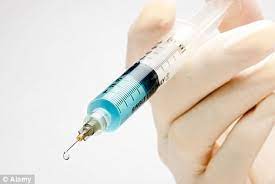
Breaking News
 James O'Keefe: My entire speech at AmericaFest 2025. We're not stopping. Join us to expose..
James O'Keefe: My entire speech at AmericaFest 2025. We're not stopping. Join us to expose..
 U.S. vs. Chinese Military Comparison – Focus on Asia-Taiwan Scenario
U.S. vs. Chinese Military Comparison – Focus on Asia-Taiwan Scenario
 DoJ Sues Four More States for Failing To Produce Voter-roll Data
DoJ Sues Four More States for Failing To Produce Voter-roll Data
 World's Largest Aviation Giant Abandons Google Over Security Concerns
World's Largest Aviation Giant Abandons Google Over Security Concerns
Top Tech News
 Perfect Aircrete, Kitchen Ingredients.
Perfect Aircrete, Kitchen Ingredients.
 Futuristic pixel-raising display lets you feel what's onscreen
Futuristic pixel-raising display lets you feel what's onscreen
 Cutting-Edge Facility Generates Pure Water and Hydrogen Fuel from Seawater for Mere Pennies
Cutting-Edge Facility Generates Pure Water and Hydrogen Fuel from Seawater for Mere Pennies
 This tiny dev board is packed with features for ambitious makers
This tiny dev board is packed with features for ambitious makers
 Scientists Discover Gel to Regrow Tooth Enamel
Scientists Discover Gel to Regrow Tooth Enamel
 Vitamin C and Dandelion Root Killing Cancer Cells -- as Former CDC Director Calls for COVID-19...
Vitamin C and Dandelion Root Killing Cancer Cells -- as Former CDC Director Calls for COVID-19...
 Galactic Brain: US firm plans space-based data centers, power grid to challenge China
Galactic Brain: US firm plans space-based data centers, power grid to challenge China
 A microbial cleanup for glyphosate just earned a patent. Here's why that matters
A microbial cleanup for glyphosate just earned a patent. Here's why that matters
 Japan Breaks Internet Speed Record with 5 Million Times Faster Data Transfer
Japan Breaks Internet Speed Record with 5 Million Times Faster Data Transfer
Injectable hydrogel treats back pain from damaged discs in human trials

The treatment is far less invasive than other surgeries, and has been given FDA approval.
Spinal discs play an important role in cushioning the vertebrae, but as with many parts of the body they begin to wear out with age. In many people, the fluid filling of the discs can dry up or leak out, causing pain and affecting mobility. Unfortunately, treatments are largely limited to care like rest, physical therapy and painkillers, or in more severe cases, surgery where discs are removed or replaced with prosthetics.
But recently, scientists have developed a new option – a hydrogel that can be injected into the spine where it fills in cracks and tears in the affected disc, restoring some of its cushioning to alleviate pain. Developed by the medical company ReGelTec, the gel is known as Hydrafil, and in 2020 it received a Breakthrough Device designation from the US FDA. And now the results of the first human trials are in.
The trial involved 20 patients aged between 22 and 69, all of whom had chronic lower back pain from DDD. They had all described their pain as four or higher on a 10-point scale, and all had reported only mild relief from existing therapies.
First, the gel is heated so that it becomes a thick liquid, which is then injected using a 17-gauge needle into the affected discs. When it cools to body temperature, it forms an implant with the same kind of biomechanical properties as the natural disc. The patients were then followed for six months to assess their recovery.
And sure enough, all participants reported improvements to pain and mobility. On a scale of 0 to 10, the average pain level reported fell from 7.1 to 2.0. On a questionnaire about how their lower back pain prevented them from performing everyday activities, their average score fell from 48 down to six.

 Advanced Propulsion Resources Part 1 of 2
Advanced Propulsion Resources Part 1 of 2

